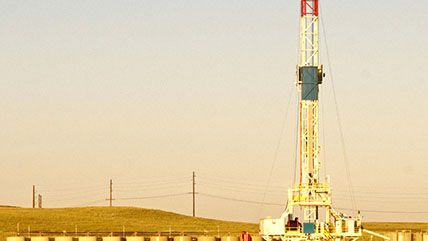Will Florida Ban Fracking?
NIMBYism in the Sunshine State.

Florida produces very little oil and natural gas. According to the state's Department of Environmental Protection, it has just 64 wells in operation, which gave the world a total of 2 million barrels of oil and 20 billion cubic feet of natural gas in all of 2016. None of those were drilled using fracking techniques.
So why did the Florida Senate consider a ban in March? It turns out that familiarity breeds acceptance, according to a January 2017 working paper by the Oregon State University sociologist Hilary Boudet and her colleagues. In the Sunshine State, the inverse seems to be true.
The authors wanted to find out how Americans who live next door to fracked wells feel about them, compared to folks who don't. So they analyzed nationally representative survey data probing the attitudes of nearly 20,000 people in nine waves between 2012 and 2016. They combined the survey results with data about how close respondents actually lived to oil and gas wells.
Among respondents who said they were familiar with fracking, which involves injecting high-pressure fluids into wells to create minute cracks that release trapped oil and natural gas, the researchers found "generalizable empirical evidence that those who are located closer to new unconventional oil and gas wells are more familiar with and more supportive of hydraulic fracturing." In other words, folks who live closer to wells are more likely to come down on the side of yimby—Yes In My Backyard.
Conversely, people living farther away from oil and gas development are more likely to associate fracking with negative impacts. Respondents in Denver (12 miles away on average from a newly active well) are more supportive of fracking than respondents in Orlando (400 miles away on average). So Floridians say nimby—Not In My Backyard—even though fracking is nowhere near their backyards.
Combined with directional drilling, this form of unconventional well development has boosted daily U.S. oil production from 5 million barrels in 2008 to nearly 9 million barrels now, and it has increased annual U.S. natural gas production from a plateau in 1970–2005 at 18 trillion cubic feet to over 27 trillion cubic feet today. This helped to cut the prices of these fossil fuels to about half of what they were a decade ago.
This article originally appeared in print under the headline "Will Florida Ban Fracking?."


Show Comments (20)